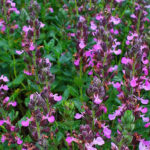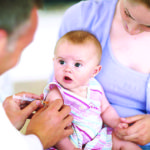The use of complementary and alternative medicine (CAM) is steadily increasing. A recent systematic review revealed that the average prevalence of CAM use by physicians in the UK was 20.6% (range 12.1–32%). Unfortunately, consumers and healthcare-givers often ignore important problems such as herbal–drug interference and side effects, or simply the uselessness of various herbal extracts sometimes taken for many years to prevent diseases and long-term toxicity, believing that ‘natural’ is synonymous with ‘safe’.
Because the use of natural health products is poorly regulated, many herbal products on the market have not been thoroughly tested for their pharmacology and toxicology, especially in pregnancy or lactation. Moreover, toxicity of herbal products arising from poor quality, incorrect or misidentified herbs, incorrect processing methods, or the supply of adulterated or contaminated herbs is also a serious problem.
The Internet now plays an important role in the spread of pseudo-scientific information, often mixed with serious scientific information, a problem further exacerbated by the easy availability of products through online sales. Unfortunately, there has been an increase in the number of websites that publish and disseminate incorrect information about natural products, and even recommend them in some cases, a use that can actually be proven harmful to health. The lack of regulation of information published on the Internet means that some ‘alternative therapies’ are being promoted without full appreciation of their potential toxicity.
Online information often presents therapeutic indications that can actually harm patients [5], for example, by promoting worrying medical claims or including the use of toxic products. In a recent survey, 522 Italian web sites containing information about the use of germander (Teucrium chamaedrys) were screened and only 63% of them reported correct information on the toxicity of this herb, which can easily be purchased online. This example is striking given that T. chamaedrys L. has become popular as a slimming decoction without any scientific proof of efficacy and notwithstanding its well-known hepatotoxicity, and its use is even banned by health authorities.
Against this background, the inclusion of natural products in pharmacovigilance systems should be mandatory. In Italy, as well as in most other countries, the National Pharmacovigilance System (directed by the Italian Medicines Agency, AIFA) collects spontaneous reports only for registered drugs, but awareness of the need for safety surveillance of natural health products has led to implementation of a reporting system for suspected adverse reactions specifically for natural products. It is clear that for both pharmacovigilance and phytovigilance, adverse drug reaction (ADR) forms should be further improved, in particular to include Internet information.
Furthermore, it would be desirable to set up a task force of online medical observers who could provide correct information on herbal products for users seeking and checking information on natural products through the Internet. These observers could surf the Internet and review news and information on the complex subject of natural product safety. On the basis of scientific evidence, they could report inaccuracies, false information, risks, and other clinical and toxicological issues on official websites for both private citizens and healthcare professionals.
Reference
Maggini V, Gallo E, Vannacci A, Gori L, Mugelli A, Firenzuoli F. e-Phytovigilance for misleading herbal information. Trends Pharmacol Sci. 2013 Nov;34(11):594-5.



